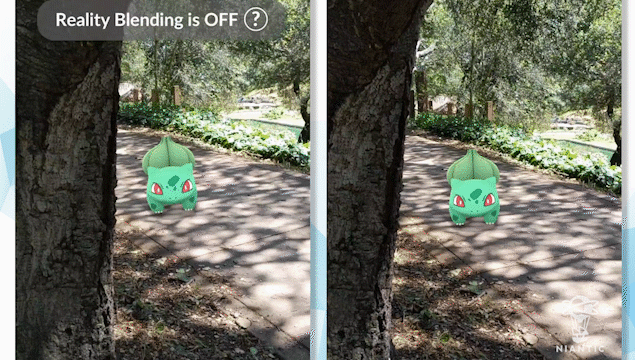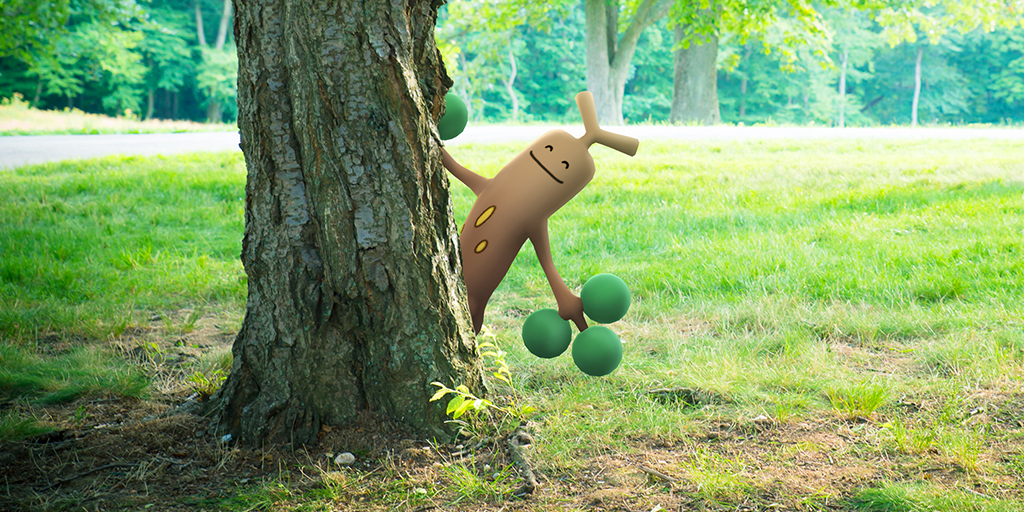Two new AR features are rolling out to select Pokémon GO players over the next few weeks. These updates will help us create more realistic AR experiences and continue our efforts toward building a 3-D map of the world—one that is oriented around people.
Testing Out Reality Blending in Pokémon GO
In June, we’ll start rolling out a new beta feature in Pokémon GO called Reality Blending that will let your Buddy Pokémon better interact with the real world. A Pokémon will be able to hide behind an actual object or be partially behind a tree or table blocking its path, just like how it would appear in the real world.

As Pokémon GO has grown throughout the years, Trainers have been able to walk, play, and take snapshots with their Buddy Pokémon. This new feature will bring Pokémon even closer to reality. Reality Blending will initially roll out to a limited number of players that have a Samsung Galaxy S9, Samsung Galaxy S10, Google Pixel 3, or Google Pixel 4, with more Trainers and eligible devices being added in the near future.
Pokémon GO Players Can Now Contribute to a 3-D Map of the World
Since Portal Scanning launched in Ingress, agents have scanned hundreds of thousands of points of interest for inclusion in building the 3-D map for games and future apps. We are now bringing this opt-in feature to the Pokémon GO community with PokéStop scanning. This feature will be first available to level 40 Trainers in early June before rolling out to more players by level.
Pokémon Trainers will be able to contribute to building 3-D maps of the locations of their favorite PokéStops and Gyms by walking around those locations and recording videos with their devices. These videos allow us to generate dynamic 3-D maps of PokéStop and Gym locations, which will improve the game’s AR experiences overall. A machine-readable, 3-D map of a place gives devices (such as current mobile phones and future headsets) a better understanding of the depth and the complexities of the real world. In the future, this will allow us to tie virtual objects to real-world locations and provide Pokémon with spatial and contextual awareness of their surroundings. For instance, this awareness could help Snorlax find that perfect patch of grass to nap on or give Clefairy a tree to hide behind.
Your privacy is incredibly important to us, and any information Trainers choose to send to Niantic is automatically anonymized, including blurring potentially recognizable objects, like faces or license plates. Niantic does not collect or store any personal data in connection with this information, and it is not tied to specific player accounts. For more information, please read our privacy policy.
By using 2-D images of people-generated points of interest to create a dynamic 3-D map of the world, we can spark the evolution of mapping from utilities traditionally oriented around transit (streets and walkways) to more meaningful and valuable location-based information oriented around people’s interests. When community members choose the points of interest that matter to them, we can use that information to build a new digital map of the world.
While there are still a lot of challenges to tackle on the way to improving AR, these additions will help us continue to create fun and exciting ways for people to interact with the world. By bringing better interactions to AR and by making it possible for people to share the places that matter to them, we aspire to create a special map of the world that inspires people to explore.
-Kjell Bronder
